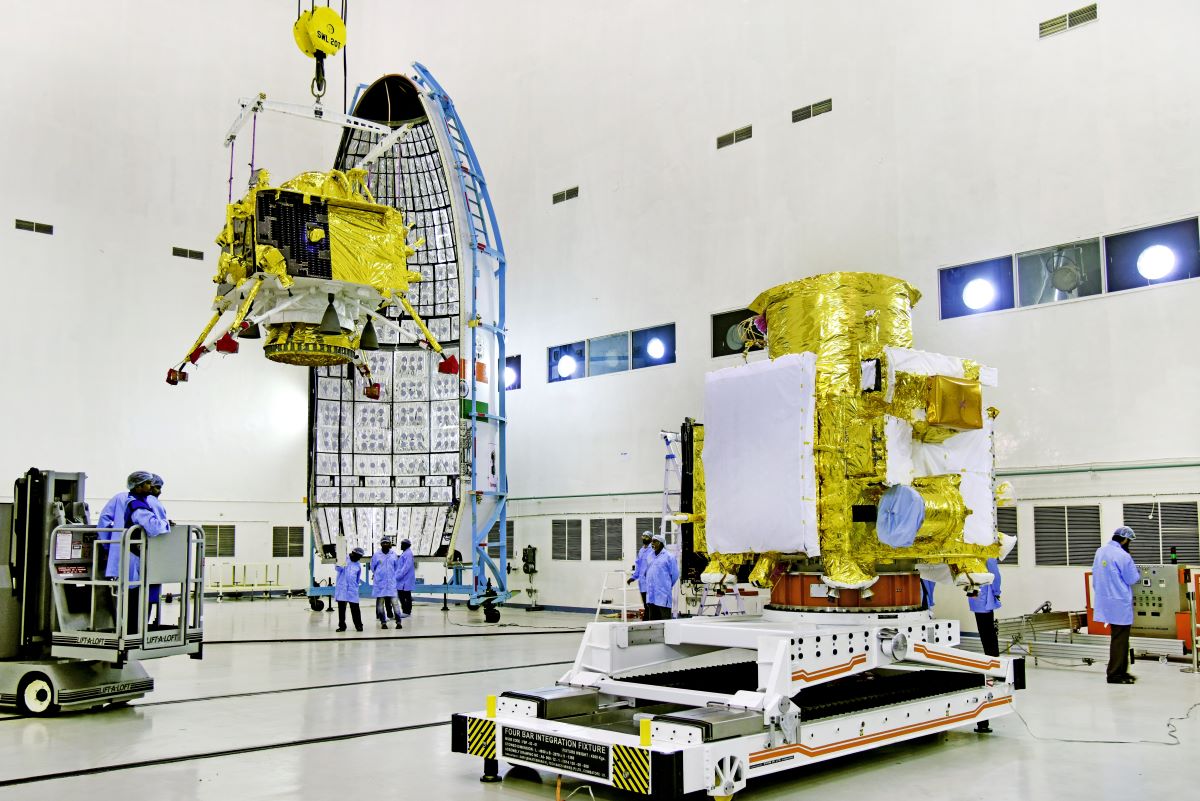The recent successful landing of a spacecraft near the lunar south pole by the Indian Space Research Organisation (ISRO) has brought the spotlight back to India’s space sector. This remarkable achievement not only establishes India as the fourth nation to land on the moon but also distinguishes it as the only country to do so, specifically at the moon’s south pole.
ISRO’s Chandrayaan 3, its third lunar exploration mission, was executed with a budget of Rs 615 crore ($74.22 mn). This mission included a lander named ‘Vikram’ and a rover called ‘Pragyan,’ both of which safely reached the lunar surface on August 23, 2023.
As a result of this accomplishment, there has been a surge of excitement and interest, leading to a collective increase in market capitalization of 13 space-focused companies by over Rs 30,700 crore ($3.70 bn) within the first four trading days after the moon landing.
“India has a well-developed space program…The opening-up of the space economy to private participation has the potential to bridge the digital divide, usher in innovative spaced-based services, and catapult India to the forefront of space tech race,” said Ernst & Young.
India’s space sector to reach $40 bn by 2040
India’s space sector is currently valued at $8 bn, contributing 2% to the global space economy, according to the Indian government. In recent years, the market has expanded at an annual rate of around 4%.
Additionally, the government’s expenditure on space amounts to approximately $2 bn, and India has launched 381 foreign satellites for 34 countries since 1999, generating $279 mn in revenues.
Looking ahead, India’s space market is projected to reach $40 bn by 2040, and with the right strategies, it can capitalise on a $100 bn market opportunity, as stated in a report titled “India in Space: A $100 Billion Industry by 2040” by consulting firm Arthur D. Little.
“The Indian space industry is on the cusp of a major transformation with increasing government expenditure on space, rapidly growing investment in the country’s private space sector, and government’s policies encouraging commercial space ventures,” commented Barnik Chitran Maitra, Managing Partner, Arthur D. Little, India & South Asia.
“India presents a very lucrative market with many opportunities for private players, and the Indian Space Research Organisation is a great ambassador for India in Space,” he added.
Nevertheless, several challenges persist. India still lacks a well-defined legislative framework for the space market despite the introduction of the Draft Space Activities bill as far back as 2017, which has not yet been passed.
Furthermore, the absence of a strong dispute resolution mechanism and comparatively lower government spending in the sector, in contrast to nations like the US and China, are issues that must be addressed in the future.
How to invest in India’s space sector?
With India’s space sector stock exhibiting robust growth and a positive outlook, we take a look at three stocks that are riding the wave of excitement surrounding the industry.
Linde India
Linde India, headquartered in India’s Bengaluru, specialises in the production and distribution of industrial gases such as oxygen, hydrogen, nitrogen, and argon. Founded in 1935, the company plays a vital role in space missions by providing essential gases and equipment.
For the full year 2022, the company witnessed an 8% year-on-year rise in sales, amounting to $33.4 bn. Similarly, within this timeframe, Linde India’s operating profits rose to $5.6 bn, growing by 8% year-on-year.
The company’s stocks are listed on the Bombay Stock Exchange (BOM: 523457) and the National Stock Exchange of India (NSE: LINDEINDIA). The stock has risen by 94.4% in the past year. It has a PE ratio of 143.79 and a price-to-book ratio of 17.79.
Centum Electronics
Centum Electronics focuses on subsystems, microelectronics, and system integration services and has a significant presence in India’s space sector. Most notably, the company delivered more than 200 mission-critical modules and systems for the Chandrayaan-3 mission.
The company’s total income rose by 42.79% year-on-year to Rs 5.05 bn ($60.95 mn) in the fiscal year ended March 31, 2023. During the same period, Centum Electronics witnessed a net profit of Rs 0.19 bn ($31.72 mn), rising by 64.87% year-on-year.
Centum Electronics stocks are listed on the Bombay Stock Exchange (BOM: 517544) and the National Stock Exchange of India (NSE: CENTUM). Since last year, the company’s shares have gained 247.97%. Also, the company’s shares have a PE ratio of 150.84 and a price-to-book ratio of 10.10.
“Debt protection metrics are comfortable marked by interest coverage and NCATD (net cash accruals to total debt) of 3.14 times and 27% respectively in FY23…CRISIL Ratings believes that CEL (Centum Electronics) shall continue to benefit from its established market position over the medium term,” said CRISIL.
Avantel
This Indian firm specialises in the production and sales of radio components and various products related to satellite communications, high-frequency communications, radar systems, and more. By actively participating in satellite launch services, the company has made its presence felt in India’s space sector.
The company registered a 47 % year-on-year rise in revenue, amounting to Rs 154 crore ($18.58 mn) for the fiscal year ended March 31, 2023. During the same period, Avantel’s net profit stood at Rs 30 crore ($3.62 mn).
The company’s stocks are listed on the Bombay Stock Exchange (BOM: 532406). Since last year, the company’s shares have risen by 398.82%. Along with that, the shares have a PE ratio of 74.58 and a price-to-book ratio of 19.16.
Editor’s note: All stock movement figures as of September 5, 2023.










 Australia
Australia China
China India
India Indonesia
Indonesia Japan
Japan Malaysia
Malaysia Philippines
Philippines Singapore
Singapore South Korea
South Korea Taiwan
Taiwan Thailand
Thailand Vietnam
Vietnam
 Germany
Germany Hong Kong
Hong Kong USA
USA Switzerland
Switzerland Singapore
Singapore









